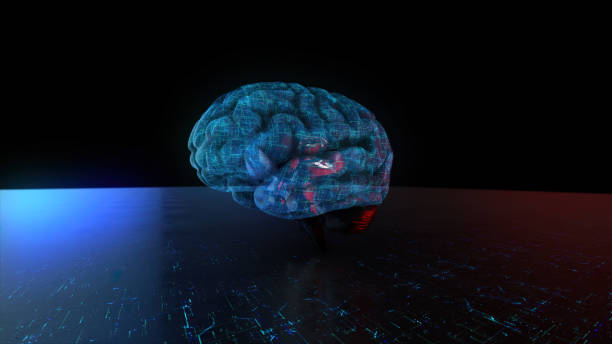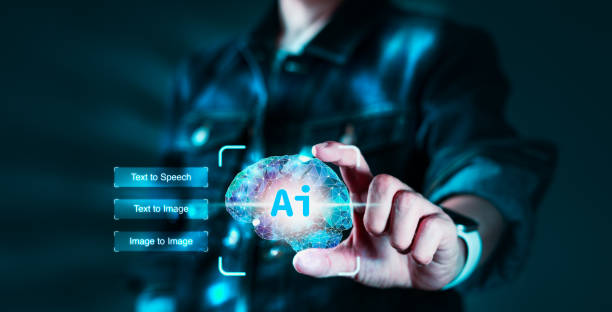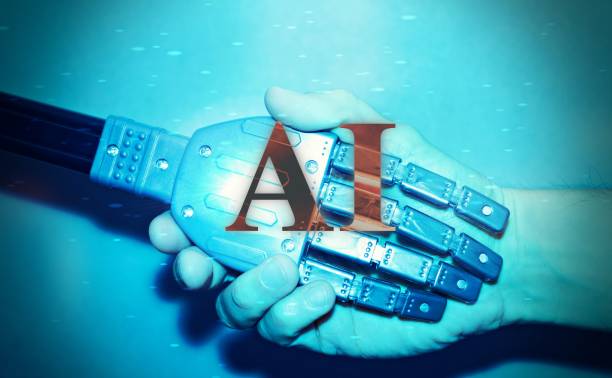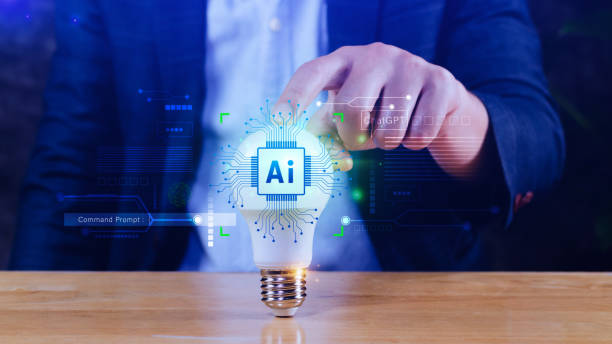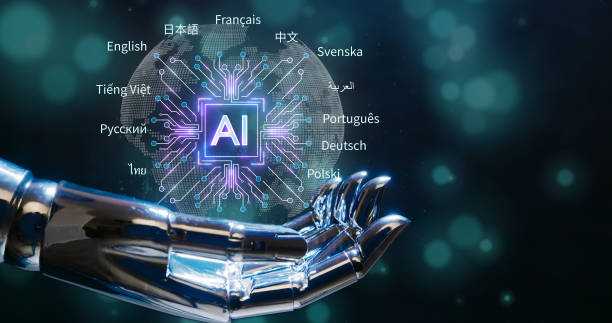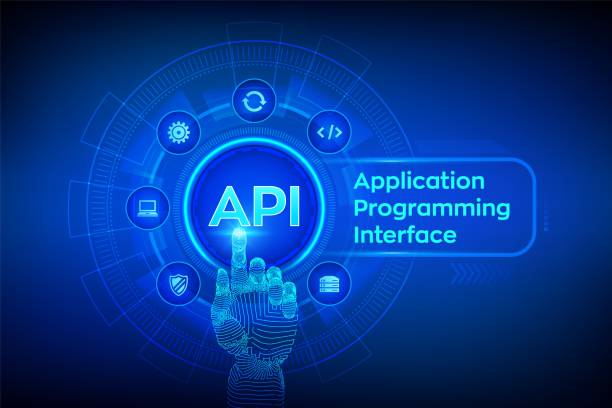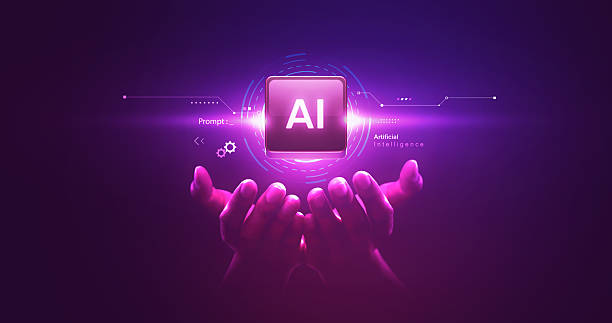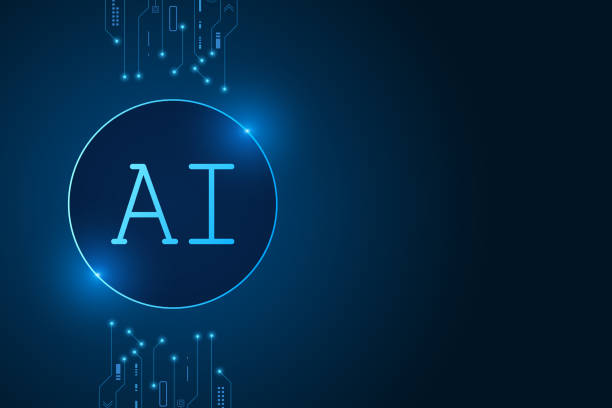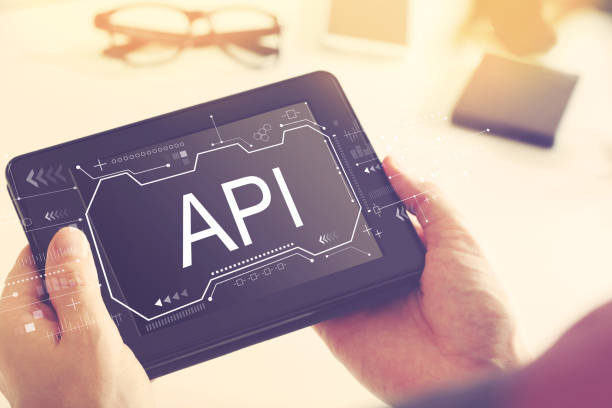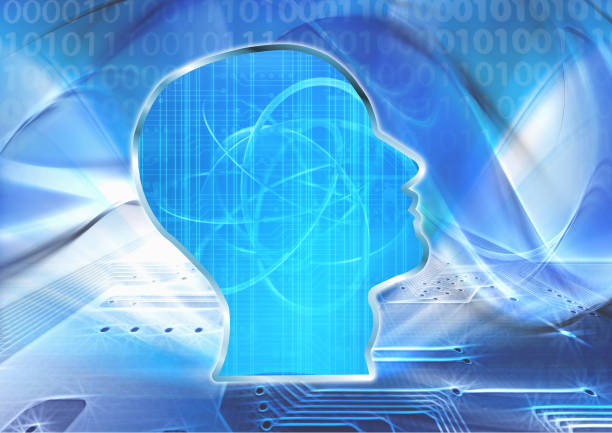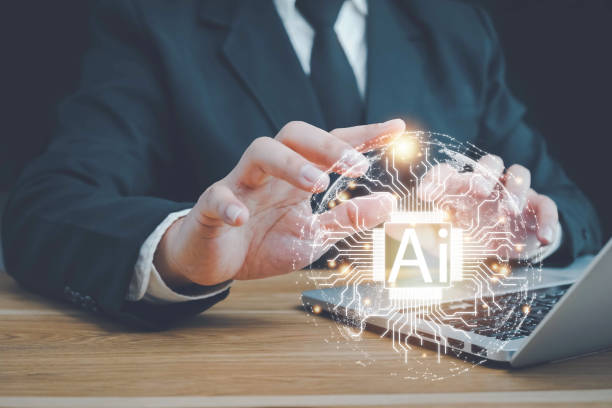What is an Artificial Intelligence Robot and How Does it Work?
In today’s world, the term #Artificial_Intelligence (AI) is increasingly heard.
But one of the most tangible and practical manifestations of artificial intelligence is the artificial intelligence robot.
These robots, often designed as software or hardware, are capable of performing tasks that require human intelligence.
An artificial intelligence robot is, in fact, a computer program or machine that, using algorithms and complex models, is capable of learning, reasoning, problem-solving, and decision-making.
The basis of the artificial intelligence robot’s operation is receiving data, processing it, and producing appropriate output.
These robots collect information from the environment through sensors, then analyze this data using machine learning algorithms (Machine Learning) and neural networks (Neural Networks), identifying patterns and relationships within them.
For example, an artificial intelligence robot can determine which image contains a cat by examining millions of images.
Or another artificial intelligence robot can predict how the price of a stock will change in the future by analyzing stock market data.
These capabilities have made the artificial intelligence robot a powerful tool in various fields, including:
- Industrial automation
- Customer service
- Medicine
- Finance
And many other areas.
Artificial intelligence robots are rapidly advancing, and it is expected that in the near future, they will play a more prominent role in our daily lives.
Tired of losing customers due to poor e-commerce site design? Solve this problem forever with Rasaweb!
✅ Increase sales and visitor-to-customer conversion rates
✅ Smooth and engaging user experience for your customers⚡ Get a free consultation
Types of Artificial Intelligence Robots in Terms of Application and Function
Artificial intelligence robots are divided into different categories depending on their application and function.
One of the most common classifications is to separate them based on the type of tasks they perform.
For example, some artificial intelligence robots are designed to automate repetitive and tedious processes, while others are used to analyze complex data and provide valuable insights.
Click here to preview your posts with PRO themes ››
Natural Language Processing (NLP) Robots: These robots are capable of understanding and generating human language.
Their applications include chatbots, machine translation, and sentiment analysis.
#Natural_Language_Processing allows artificial intelligence robots to communicate with humans naturally.
Computer Vision Robots: These robots are capable of seeing and interpreting images and videos.
Their applications include facial recognition, object detection, and self-driving cars.
Artificial intelligence robots equipped with computer vision can be used in areas such as security, manufacturing, and medicine.
Machine Learning Robots: These robots are capable of learning from data and improving their performance without the need for explicit programming.
Their applications include prediction, classification, and clustering.
Artificial intelligence robots using machine learning can become smarter and more efficient over time.
Robotics Robots: These robots are a combination of hardware and software and are capable of performing physical tasks in the real world.
Their applications include industrial automation, robotic surgery, and logistics services.
Artificial intelligence robots in the field of robotics can assist humans in performing dangerous or difficult tasks.
Advantages and Disadvantages of Using Artificial Intelligence Robots
The use of artificial intelligence robots has numerous advantages, including increased productivity, reduced costs, improved accuracy and speed, and the ability to perform complex and dangerous tasks.
However, the use of this technology also has disadvantages, including high implementation costs, the need for technical expertise, ethical and social concerns, and the potential loss of jobs.
Advantages:
- Increased Productivity: Artificial intelligence robots can work around the clock without fatigue, leading to a significant increase in productivity.
- Reduced Costs: By automating processes, artificial intelligence robots can reduce labor costs and other operating expenses.
- Improved Accuracy and Speed: Artificial intelligence robots can perform tasks with much higher accuracy and speed than humans, leading to fewer errors and improved quality.
- Ability to Perform Complex and Dangerous Tasks: Artificial intelligence robots can work in dangerous and complex environments, which are impossible or very dangerous for humans.
Click here to preview your posts with PRO themes ››
Disadvantages:
- High Implementation Costs: Implementing artificial intelligence robots requires a significant initial investment.
- Need for Technical Expertise: The development, deployment, and maintenance of artificial intelligence robots require a high level of technical expertise.
- Ethical and Social Concerns: The use of artificial intelligence robots can lead to ethical and social concerns, such as discrimination and bias.
- Potential Loss of Jobs: Automating processes can lead to job losses, which is a serious social challenge.
| Advantages | Descriptions |
|---|---|
| Increased Productivity | Robots can work around the clock. |
| Reduced Costs | Reduction in labor and operational costs. |
| Improved Accuracy | Reduction in errors and improved quality. |
Applications of Artificial Intelligence Robots in Various Industries
Artificial intelligence robots have widespread applications in various industries.
In the manufacturing industry, artificial intelligence robots are used to automate production lines, control quality, and predict equipment failures.
In the service industry, artificial intelligence robots are used to provide customer service, answer questions, and conduct financial transactions.
In the healthcare industry, artificial intelligence robots are used to diagnose diseases, provide treatment, and perform robotic surgery.
Manufacturing: Artificial intelligence robots play an important role in increasing efficiency and reducing costs in the manufacturing industry.
Their applications include:
- Automating Production Lines: Artificial intelligence robots can fully automate production processes, leading to increased speed and accuracy.
- Quality Control: Artificial intelligence robots can automatically inspect products and identify defects.
- Predicting Equipment Failures: By analyzing sensor data, artificial intelligence robots can predict equipment failures and prevent production stoppages.
Services: Artificial intelligence robots in the service industry can help improve customer experience and reduce costs.
Their applications include:
- Providing Customer Service: Chatbots and other artificial intelligence robots can answer customer questions and solve their problems.
- Answering Questions: Artificial intelligence robots can answer questions about products and services.
- Conducting Financial Transactions: Artificial intelligence robots can automatically conduct financial transactions.
Healthcare: Artificial intelligence robots in the healthcare industry can help improve the accuracy of diagnosis and treatment of diseases.
Their applications include:
- Diagnosing Diseases: By analyzing medical images and other data, artificial intelligence robots can diagnose diseases more accurately.
- Providing Treatment: Artificial intelligence robots can provide personalized treatments.
- Robotic Surgery: Artificial intelligence robots can perform complex surgeries with greater precision and delicacy.
Is your e-commerce site ready to maximize customer acquisition and increase sales? Rasaweb transforms your online business with modern and efficient e-commerce website design.
✅ Increased speed and improved SEO
✅ Excellent user experience on mobile and desktop⚡ Get a free e-commerce website design consultation from Rasaweb!
Challenges in Developing and Implementing Artificial Intelligence Robots
Developing and implementing artificial intelligence robots faces numerous challenges.
One of the most important challenges is collecting and preparing sufficient and high-quality data.
Artificial intelligence robots need a large amount of data to learn and improve their performance.
Another challenge is selecting appropriate algorithms and optimizing them for specific applications.
Also, implementing artificial intelligence robots requires appropriate hardware and software infrastructures.
Collecting and Preparing Data: Artificial intelligence robots need a large amount of high-quality data to learn and improve their performance.
Collecting and preparing this data can be time-consuming and costly.
Also, the data must be such that it represents reality and avoids potential biases.
Selecting Appropriate Algorithms: There are various algorithms for machine learning, each suitable for specific applications.
Choosing the right algorithm and optimizing it for the intended application can be a challenge.
Also, the algorithms must be designed to be reliable and interpretable.
Hardware and Software Infrastructures: Implementing artificial intelligence robots requires appropriate hardware and software infrastructures.
These infrastructures include servers, networks, development software, and other tools needed to develop, deploy, and maintain artificial intelligence robots.
Ethical and Legal Issues: The use of artificial intelligence robots can raise various ethical and legal issues.
For example, who is responsible for the decisions made by the artificial intelligence robot? How can we prevent the misuse of artificial intelligence robots? These issues require careful discussion and review.
The Future of Artificial Intelligence Robots and Their Impact on Our Lives
The future of artificial intelligence robots is bright and full of potential.
It is expected that in the near future, artificial intelligence robots will play a more prominent role in all aspects of our lives.
Predictions for the future of artificial intelligence robots include:
- Wider Automation of Processes: Artificial intelligence robots will be able to automate more processes in various industries, leading to increased productivity and reduced costs.
- Development of Autonomous Vehicles: Artificial intelligence robots will play a key role in the development of autonomous vehicles, which can make transportation safer and more efficient.
- Providing Personalized Services: Artificial intelligence robots will be able to provide personalized services in various fields, such as education, healthcare, and financial services.
- Development of Humanoid Robots: Artificial intelligence robots can help develop humanoid robots, which are capable of performing complex tasks in different environments.
However, the development of artificial intelligence robots requires attention to ethical and social issues.
We must ensure that artificial intelligence robots are used for the benefit of society and that their misuse is prevented.
Also, attention should be paid to the impact of artificial intelligence robots on the labor market and programs should be designed to train and empower the workforce.
Key Points in Selecting and Implementing Artificial Intelligence Robots
Selecting and implementing artificial intelligence robots requires attention to key points.
First, you need to accurately identify your needs and determine how artificial intelligence robots can help you achieve your goals.
Then you need to research and compare different artificial intelligence robots with each other.
Finally, you need to develop a detailed implementation plan and ensure that you have the necessary resources to implement it.
Identifying Needs: Before anything else, you need to accurately identify your needs and determine how artificial intelligence robots can help you achieve your goals.
For example, are you looking to automate a specific process? Are you looking to improve the accuracy of your decision-making? Are you looking to provide personalized services to your customers?
Researching and Comparing: After identifying your needs, you need to research and compare different artificial intelligence robots with each other.
Look for artificial intelligence robots that are compatible with your needs and use advanced technologies.
Also, consider the implementation, maintenance, and support costs of the artificial intelligence robots.
Implementation Plan: Before implementing artificial intelligence robots, you need to develop a detailed implementation plan.
This plan should include the following steps:
- Defining Goals
- Identifying Required Resources
- Setting Timelines
- Assigning Responsibilities
- Assessing Risks
Resources: To implement artificial intelligence robots, you need various resources, including:
- Technical Expertise
- Data
- Hardware and Software Infrastructures
- Budget
Make sure you have the necessary resources before starting to implement artificial intelligence robots.
Impact of Artificial Intelligence Robots on the Labor Market and Employment
The impact of artificial intelligence robots on the labor market and employment is a controversial topic.
Some believe that artificial intelligence robots lead to job losses, while others believe that artificial intelligence robots create new job opportunities.
The reality is that artificial intelligence robots can both lead to job losses and create new job opportunities.
Job Losses: Artificial intelligence robots can automate repetitive and tedious processes, leading to the loss of jobs that require low skills.
For example, drivers, telephone operators, and administrative staff are among those who may lose their jobs due to artificial intelligence robots.
Creating New Job Opportunities: Artificial intelligence robots can create new job opportunities in areas such as artificial intelligence robot development, artificial intelligence robot maintenance, and data analysis.
For example, artificial intelligence robot engineers, data scientists, and machine learning specialists are among those whose demand is increasing.
Changing the Nature of Jobs: Artificial intelligence robots can also change the nature of jobs.
For example, employees who currently perform repetitive tasks may take on more complex tasks in the future that require analytical and creative skills.
| Impact | Description |
|---|---|
| Job Losses | Automation of repetitive tasks |
| Creating New Jobs | In the areas of AI development and maintenance |
Does your current e-commerce website design not generate the sales you expect?
Rasaweb specializes in professional e-commerce website design!
✅ An attractive and user-friendly site designed to increase sales
✅ High speed and security for an ideal shopping experience⚡ Get a free online store design consultation with Rasaweb!
Ethical Considerations in Designing and Using Artificial Intelligence Robots
Designing and using artificial intelligence robots involves important ethical considerations.
One of the most important ethical considerations is ensuring that artificial intelligence robots are used for the benefit of society and that their misuse is prevented.
Also, attention should be paid to issues related to privacy, discrimination, and accountability.
Misuse: Artificial intelligence robots can be used for malicious purposes, such as creating fake news, attacking computer systems, and monitoring individuals.
We must ensure that artificial intelligence robots are designed and used in a way that prevents their misuse.
Privacy: Artificial intelligence robots need to collect and analyze data to learn and improve their performance.
This data may include personal information of individuals.
We must ensure that the personal information of individuals is kept secure and is not misused.
Discrimination: Artificial intelligence robots may be unintentionally discriminatory.
For example, if an artificial intelligence robot is trained on data that contains racial or gender biases, it may make decisions that are discriminatory.
We must ensure that artificial intelligence robots are designed and trained in a way that prevents discrimination.
Accountability: If an artificial intelligence robot makes a mistake, who will be responsible? This is a complex question that requires careful discussion and review.
There should be a mechanism for determining accountability for decisions made by artificial intelligence robots.
How Can We Benefit from Artificial Intelligence Robots in Everyday Life?
Today, artificial intelligence robots are increasingly present in our daily lives, and we can benefit from them to improve our quality of life.
Ways to use artificial intelligence robots in everyday life include:
- Using Voice Assistants: Voice assistants like Siri, Google Assistant, and Alexa use artificial intelligence robots to understand and respond to voice commands.
You can use these assistants to do things like set reminders, play music, and search the internet. - Using Chatbots: Chatbots are artificial intelligence robots that can answer your questions and help you do things like shop online and book hotels.
- Using Recommendation Systems: Recommendation systems use artificial intelligence robots to suggest products, movies, and music that you might be interested in.
- Using Smart Home Applications: Smart home applications use artificial intelligence robots to control various devices in your home, such as lights, thermostats, and security systems.
As artificial intelligence robots advance, we expect to see even more applications of this technology in our everyday lives in the near future.
Frequently Asked Questions
| Row | Question | Answer |
|---|---|---|
| 1 | What is an artificial intelligence robot? | An artificial intelligence robot is a machine capable of understanding, reasoning, learning, and problem-solving, and can perform complex tasks with relative autonomy. |
| 2 | What are the most important applications of artificial intelligence robots? | The main applications include industrial production, customer service (chatbots), medicine and surgery, autonomous transportation, space exploration, and military affairs. |
| 3 | What is the main difference between an artificial intelligence robot and a regular robot? | A regular robot only follows programmed instructions, while an artificial intelligence robot can learn from data, make decisions, and adapt to new environments. |
| 4 | How do artificial intelligence robots learn? | They learn through machine learning algorithms (such as deep learning, reinforcement learning) and processing vast amounts of data, identifying patterns, and improving their performance. |
| 5 | Can artificial intelligence robots have feelings? | Currently, artificial intelligence robots do not have real feelings in the human sense. They can mimic or recognize emotions, but they do not understand and experience them. |
| 6 | What are the current limitations of artificial intelligence robots? | Limitations include the need for large amounts of data, the inability to understand abstract concepts, the lack of real creativity, ethical issues, and the challenges of generalizability in new environments. |
| 7 | What is the role of artificial intelligence in the development of humanoid robots? | Artificial intelligence helps humanoid robots walk, maintain their balance, understand their surroundings, interact with humans, and perform complex tasks. |
| 8 | How is the future of artificial intelligence robots predicted? | It is predicted that artificial intelligence robots will become smarter, more autonomous, and capable of performing more complex tasks in everyday life and industry, and their interaction with humans will increase. |
| 9 | Can artificial intelligence robots replace all human jobs? | It is unlikely that all human jobs will be replaced. Robots will take over many repetitive and dangerous tasks, but jobs that require creativity, empathy, and ethical judgment will remain. |
| 10 | What ethical and social challenges arise with the expansion of artificial intelligence robots? | Challenges include issues related to privacy, data security, ethical decision-making by robots, the impact on employment, and accountability in case of errors. |
And other advertising services of Rasa Web Advertising Agency
Intelligent Content Strategy: Professional optimization to attract customers using user experience customization.
Intelligent Custom Software: A professional solution to attract customers by focusing on a SEO-oriented content strategy.
Intelligent Customer Journey Map: A quick and efficient solution to improve SEO ranking by focusing on Google Ads management.
Intelligent Reporting: A professional solution for analyzing customer behavior by focusing on intelligent data analysis.
Intelligent Linking: A dedicated service to increase click-through rates based on user experience customization.
And more than hundreds of other services in the field of internet advertising, advertising consulting and organizational solutions
Internet Advertising | Advertising Strategy | Advertorial
Resources
Robotics and Artificial Intelligence: The Future is in the Hands of These Two
,Artificial Intelligence in Robotics
,What is an Intelligent Robot???
,Application of Intelligent Robots
? Are you ready to transform your business in the digital space? Rasaweb Digital Marketing Agency, with its comprehensive and specialized services, guides you on the path to online success. With years of experience, we help businesses establish a strong and effective presence in the digital world.
From search engine optimization (SEO) strategies and content marketing to responsive website design and the execution of targeted advertising campaigns, we cover all your digital needs. Our goal is to increase your visibility, attract more customers, and ultimately achieve sustainable growth for your business.
By trusting the expertise of the Rasaweb team, you can confidently entrust the digital future of your business to us. We are committed to delivering the best results for you and ensuring that your brand shines in today’s competitive landscape. Take a firm step towards great success with Rasaweb.
📍 Tehran, Mirdamad Street, next to the Central Bank, South Kazerun Alley, Ramin Alley No. 6

